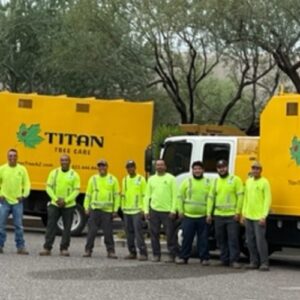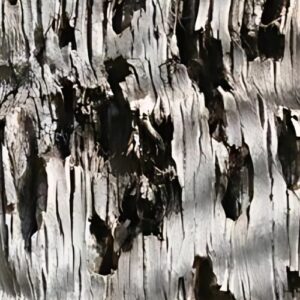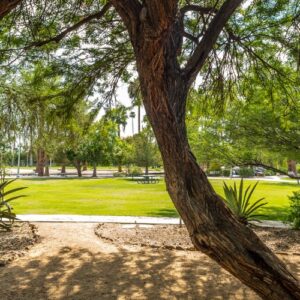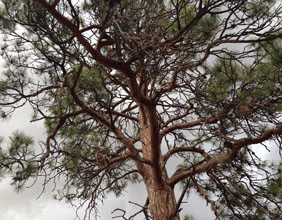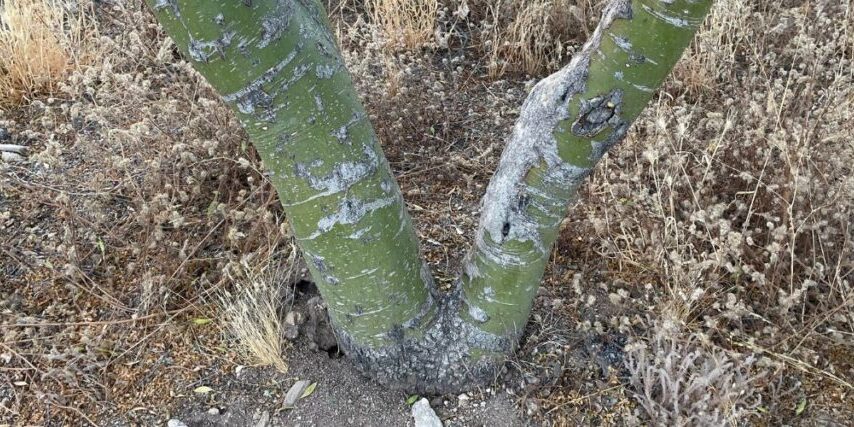
While trees with more than one trunk, known as “codominant stems,” may look harmless to the casual observer, many trees that break or fall during storms have this tree structure.
Codominant stems cause weakness in trees, which becomes more pronounced during high winds or storms, such as during monsoon season. Many of the broken or fallen trees that we see here in the Anthem and Greater Phoenix areas are from codominant stem issues.
In this article, we’ll explain more about what codominant stems are, how to check if your trees have them, and some options for what to do.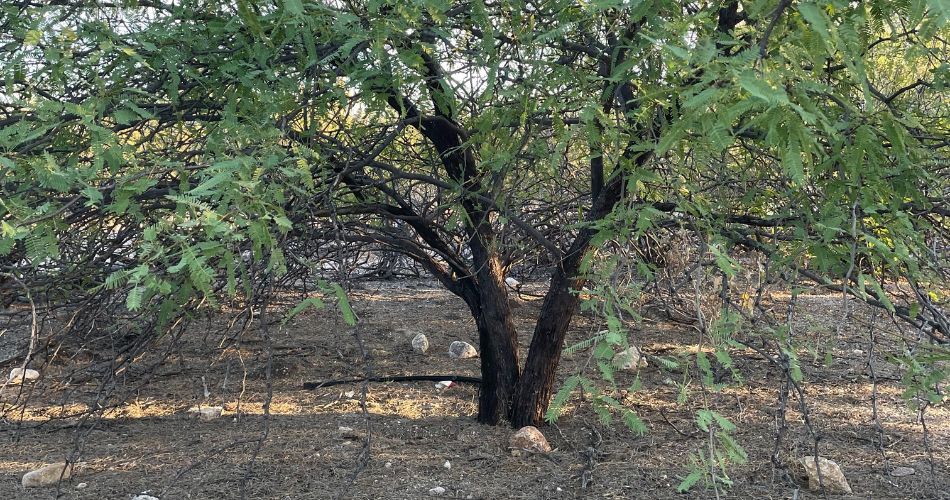
What are Codominant Stems?
You may have always referred to the bottom of a tree as a “trunk,” but most in the arboriculture field refer to the main section of a tree as the “stem.”
Codominant stems are when two similarly sized main branches grow from the same spot near the bottom of the tree.
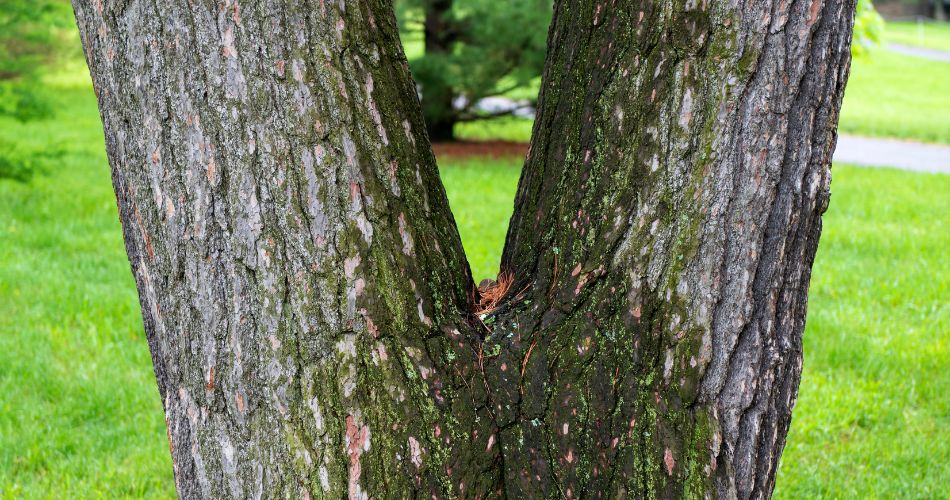
What Are the Risks of Codominant Stems?
Codominant stems can be divided into several categories of risk. Below are some issues to check for if your tree has more than one central leader.
Is the Spot Where the Stems Meet V-Shaped?
The first thing to check is if the union, or the spot where the trunks meet, is V-shaped or U-shaped. If it is V-shaped or a V union, it is more likely to fail than a U.
V-shaped unions often have excess bark between the two stems, which means that the actual wood of the tree does not meet and is only connected by the bark.
The excess bark is known as “bark inclusion,” and the excess bark not only prevents a strong connection between branches but it can also collect water, debris, and organisms that can lead to tree diseases.
Can you Spot Signs of Decay Where the Stems Meet?
The risk grows if there are signs of decay in the union. Look for rotten wood, fungi, other plants growing in the union, swelling, or even fluid. All of these can be signs of decay.
Not all liquid is a sign of bad news. Learn why sap may be oozing from your tree’s trunk.
However, once part of a tree begins to decay, it is more likely to fail.
Are There Cracks Where the Stems Meet?
The highest sign of risk is if there are cracks already forming where the codominant stems meet. A cracked branch is close to breaking and falling. This can be especially dangerous if people or property are under the cracked branch.
If you don’t spot any cracks, you can check for something called reaction wood, which is formed when a tree tries to heal any wounds or openings.
Are the Stems Uneven?
If the codominant stems are growing unevenly, the structure of the tree can become unbalanced. An unbalanced tree is more likely to fall in high winds or strong weather.
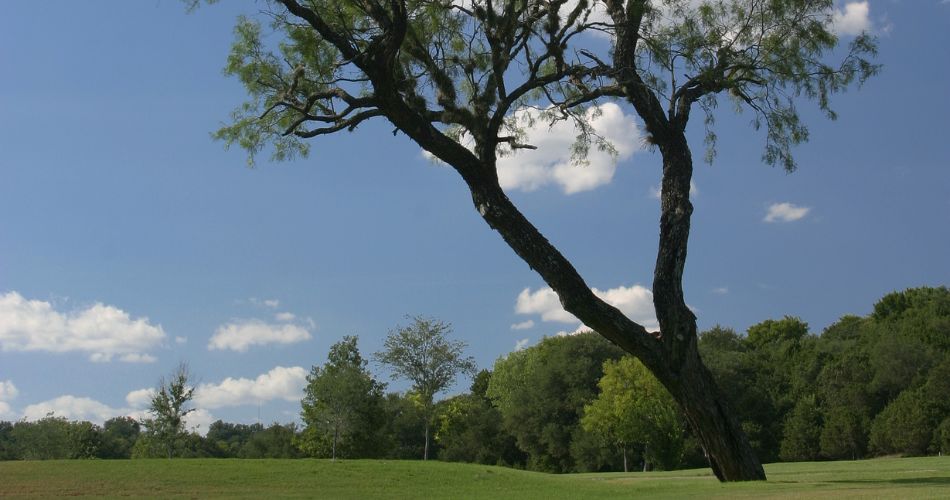
What to Do With Codominant Stems
Depending on the age of your tree, you have different options for dealing with codominant stems.
Have a Young Tree Correctively Pruned
If a tree is still small and young, it may be able to correct the codominant stems by removing one of the stems (usually the smaller one). A tree professional can help determine if this is still possible on your tree and help determine which stem should be removed.
If the incorrect stem is pruned, it can cause issues with the tree in the future.
Schedule Crown Reduction Pruning
Professional tree care companies such as Titan Tree will know how to perform crown reduction pruning on trees with codominant stems. This type of pruning keeps trees’ canopies compact, which reduces the torque on the structural weakness created by codominant stem growth patterns.
Essentially, crown reduction pruning reduces the length and spread of the tree’s canopy. With fewer leaves and branches weighing down the codominant stems, they are less likely to tear apart.
Keep in mind that crown reduction pruning is NOT tree topping.
Schedule a Professional Tree Removal
Of course, pruning can reduce the chance of trees breaking or falling during monsoons or high winds, but nothing can ensure that a tree will not fail.
If you have an older tree, a tree that will cause substantial damage if it would fall, or one that could harm people or property, you may want to consider having it removed.
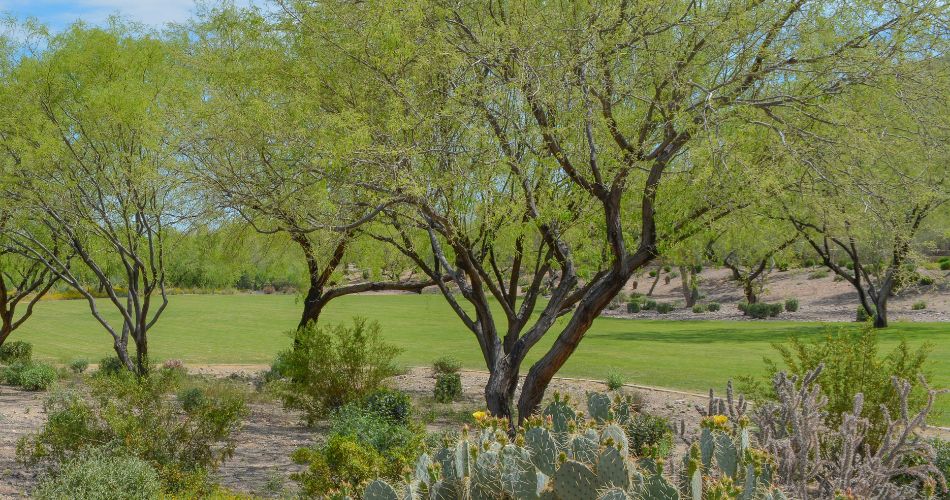
Breaking or Falling Trees is Common
Keep in mind that many of our native trees are multi-trunked and have shorter lifespans, so, while inconvenient, it is not unusual for trees to fall.
However, there are ways to prevent some storm damage. You can read more about the reasons why trees may break or uproot (and ways to prevent it from happening) in our blog about why trees suddenly fall over.
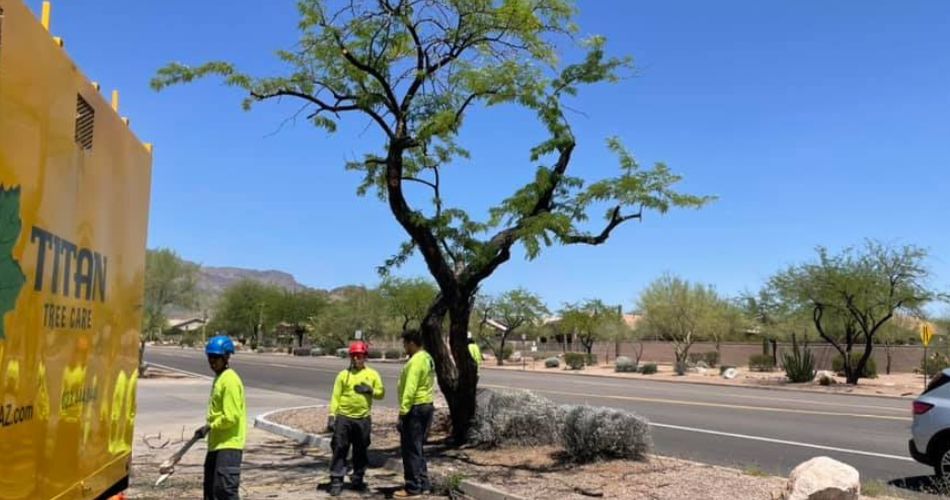
Contact Titan Tree to Schedule Tree Pruning or Removal
If you are concerned about any of your trees, including those with codominant stems, contact Titan Tree. We can provide a professional assessment of your trees and let you know if we think pruning would benefit them or if a tree removal is your best option.
More Articles Like This

Titan Tree Care is a full-service tree care company located in Anthem, AZ and serving all of North Phoenix. We offer a wide range of services to meet your tree care needs, including tree and palm trimming, tree pruning, tree removal, stump grinding, and more. We also offer insect or disease treatments and fertilization services. We are dedicated to providing high-quality, safe, and effective tree care services to our customers and work hard to ensure that your trees are healthy and look their best.





